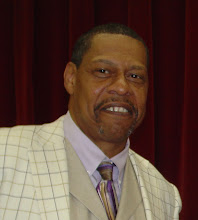Have you ever noticed how we look at each other and based on our clothes, our language, and our body language we make decisions about people. I have people do it to me all the time and it is not based entirely on my being black. I dress a certain way, I speak a certain way and people make assumptions about me. If they take the time to know me and I give them the opportunity to know me, many times they are surprised to know who I really am. People assume that I will identify with their thoughts and ideas based solely on what they perceive about me through those outward manifestations.
Did you know that we all have hidden rules that we abide by? Oh, don’t look for them because they are never written down, but everyone in our sphere of contact knows them. Those who are not in our sphere do not know them. And this is how we tell who we can share and bond with and who we can’t and it doesn’t matter what color they are because these rules are deeper than color. Poor people bond together usually no matter what color they are because they know “the rules”, just as rich people bond together regardless of color because they know “the rules”. We base many of our assumptions about people we encounter everyday based on these unwritten rules.
So just what are these rules and who created them. The thing about these rules is that because they are unwritten none really knows where they came from, but they are taught to every generation. This is why you see young white men in ghetto situations taking on the characteristics of the dominant culture. Their speech, dress, and attitudes toward relationships change. They learn “the rules” are they are ostracized or physically harmed. In, the same way those young black men that are raised in affluent situations take on the characteristics of the dominant culture. Their speech, dress, and attitudes change. Hence, the infamous, he is so articulate. Both learn and imitate the values of the group they are exposed to. We have seen cases of both in all of our daily lives and sometimes it makes us just shake our heads in wonder.
“One of the key resources for success in school and at work is an understanding of the hidden rules. Hidden rules are the unspoken clues that individuals use to indicate membership in a group. The chart on hidden rules (see p. 5) provides details, but generally, in middle class, work and achievement tend to be the driving forces in decision-making. In wealth, the driving forces are the political, social, and financial connections. In generational poverty, the driving forces are survival, entertainment, and relationships. That is why you will have a student whose Halloween costume cost $30 but the textbook bill is not paid. Relationships and entertainment are more important than achievement.”[1]
Ruby Payne is an educator and lecturer; she has done extensive work in the field of these hidden rules and how they affect our interaction with the world, our successes, and our failures. She has made a list of some of the more common hidden rules that govern us not based on race, but based on class. I have always been a firm believer that race and class clashed and became inextricably connected in America through the slavery experience. Prior to the slave trade in America slavery was never for in perpetuity, all slavery was temporary. You were a slave for awhile and then you became free when your time was up. That all changed and with it race became more important than class. Now we cannot see one for the other and it is clouding our ability to move past the one to work on the other.
Payne’s journey into class consciousness began more than 30 years ago, when she met Frank, the man who would become her husband. Ruby was raised in a middle-class Mennonite family in Ohio, while Frank grew up in extreme poverty in Goshen, Ind. As Ruby began to spend time in Frank’s impoverished neighborhood, she realized that she didn’t understand the first thing about the lives of the people who lived there — and they didn’t get her, either. Frank’s friends were appalled that Ruby didn’t know how to defend herself in a fight; Ruby was stunned that her neighbors would regularly get paid on Friday and, after a weekend of carousing, be broke by Monday.
As Payne studied her new surroundings, she came to appreciate more subtle nuances of class division. She realized that her husband’s family’s poverty was what she would later come to call “situational”: they had been middle class until Frank’s father died when Frank was 6, and only then had they slipped down to the economy’s bottom rung. Most of their neighbors, by contrast, were in “generational poverty,” meaning their families had been poor for as long as anyone could remember. Each group, she discovered, had its own distinct set of beliefs and customs.
Payne believes that teachers can’t help their poor students unless they first understand them, and that means understanding the hidden rules of poverty. The second step, Payne says, is to teach poor students explicitly about the hidden rules of the middle class. She emphasizes that the goal should not be to change students’ behavior outside of school: you don’t teach your students never to fight if fighting is an important survival skill in the housing project where they live. But you do tell them that in order to succeed at school or later on in a white-collar job, they need to master certain skills: how to speak in “formal register,” how to restrain themselves from physical retaliation, how to keep a schedule, how to exist in what Payne calls the “abstract world of paper.”[2]
Ms. Payne teaches that it is unfair to hold others to these hidden rules that they are not familiar with. We assume because we were raised with these hidden rules that everyone else has been taught them as well and we become shocked or disappointed when others do not abide by them. And in fact we all have been raised with these hidden rules, it’s just that different groups have different rules. And rarely in the majority culture is it necessary to know the rules of the other groups. These rules she uses of course are based on lots of people and are not laws, they are just rules. They are some people whom they will not apply to. But for the most part they go a long way in explaining behavior and motivations. Many whites can never understand how seemingly successful people, both black and white can sabotage themselves for what appears to be no reason. We have a saying in the “hood”, “You can take someone out of the ghetto, but you can’t take the ghetto out of someone.”
Truth be told, these people are still being directed by their hidden rules. Unless these rules are replaced with new rules they will continue to control an individual’s life and choices. Just because I am now successful doesn’t mean I identify with other successful people. This is why whites discriminate between “old” money and “new” money. Old money has had generations to get use to having money; new money has not become comfortable with having money. Lottery winners are a prime example of those who are not accustomed to having money.
While I found a lot of her concepts valid, I don’t think Ms. Payne recognized or gave enough emphasis to the racial component of these rules. We have cultural rules as well and sometimes those can cause misunderstandings. Overall, I think that her ideas are valuable for educators and those who interact with people in another class and to help create an atmosphere of understanding and a bridge to communication.
I think that we here in “Blogoworld” suffer from these same symptoms. We come here and share ideas and think we also share “rules” and when we realize we don’t it is sometimes difficult to accept that others may still be sympathetic but in their own way, in a way that their rules allow or expresses. Many here are shocked when expressions of color or race are depicted and it makes them uncomfortable, because in their rules we just don’t talk about those things. We are color-blind, well that is not accurate and prevents meaningful dialog. I guarantee you if you are in an urban setting and 2-3 hip hop boys come your way on a dark street you will begin to notice color very quickly. If we are to come together and overcome the myriad of issues that confront us as a nation we must take the time and effort to know one another and not assume we know each other, but actually talk, discuss, argue, debate and not be fearful of the consequences. We must each one of us search our own consciences, fears, and prejudices. I can‘t get help if I can’t admit there is a problem.
There will always be those who can never overcome the stigma of racial superior thinking and that is their loss, but for those of us who are genuinely serious about addressing race in America, we must begin the dialog and not just here in Blogoworld, but in our homes, local communities and states. We should engage each other in personal ways, spending time with one another. This is no easy task, but it is one that some of us must try. It is in our “rules” to try and keep trying.







 Stumble It!
Stumble It!
No comments:
Post a Comment